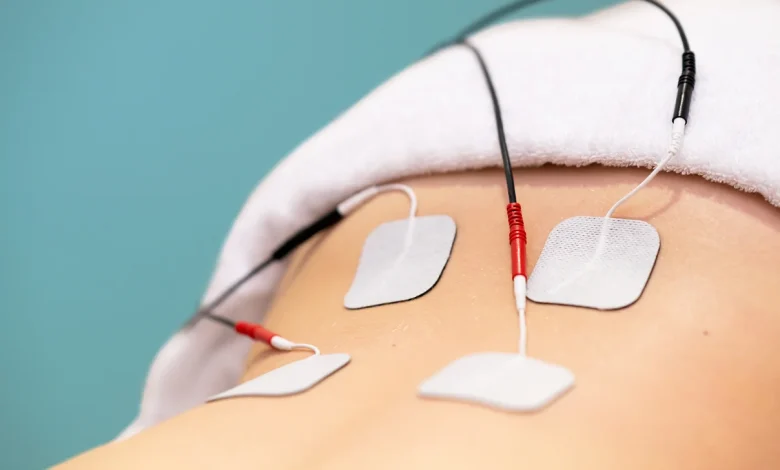Top Tips for Selecting the Right TENS Machine for You

Transcutaneous electrical nerve stimulation, commonly known as TENS, is a non-invasive treatment method that has gained popularity in recent years for its effectiveness in managing various types of pain. As more people seek alternatives to traditional pain management techniques, TENS therapy has emerged as a promising solution.
A TENS machine is a small, portable device that delivers low-voltage electrical currents through electrodes placed on the skin. These electrical impulses interfere with pain signals sent to the brain, effectively reducing pain perception. With a wide range of options available, the TENS machine price can vary depending on the model and features. Additionally, TENS therapy is believed to stimulate the production of endorphins, the body’s natural pain-relieving chemicals, further enhancing its pain-management capabilities.
As a physiotherapy machine, TENS devices have become increasingly popular among healthcare professionals and patients. This non-pharmacological approach to pain relief offers several advantages, including its non-invasive nature, minimal side effects, and the ability to use it in conjunction with other treatments. Moreover, the portability of TENS units allows patients to manage their pain at home, providing a convenient and cost-effective solution for ongoing pain management.
Identifying Your Pain Management Goals
When seeking pain relief, it’s crucial to establish clear objectives tailored to your particular needs. Whether you’re dealing with chronic pain or acute discomfort, understanding your goals can help guide your treatment plan effectively.
For some individuals, targeted pain relief for specific body areas may be the primary focus. This could involve addressing lower back pain, joint discomfort, or headaches. Others might require more general pain relief strategies to manage widespread discomfort.
Consider the frequency of treatment needed. Are you looking for daily pain management solutions or occasional relief for flare-ups? This will influence the type of interventions you pursue.
Pain intensity levels also play a significant role in goal-setting. While some aim to eliminate pain, others focus on reducing its severity to a manageable level, allowing for improved daily functioning.
For those grappling with chronic pain relief, long-term strategies and lifestyle adjustments may be necessary. In contrast, acute pain management might involve short-term, intensive treatments to address immediate concerns.
Evaluating Power and Intensity Levels
When selecting a TENS device, evaluating its power and intensity levels is crucial to ensure it meets your needs. For those experiencing low to moderate pain, a device with lower power output and a narrower range of intensity settings may suffice. However, individuals with severe or chronic pain require a unit with higher power capabilities and a broader spectrum of adjustable intensity levels.
Most TENS devices offer adjustable intensity, allowing users to fine-tune their treatment. Look for units that provide a wide range of power output, typically measured in milliamps (mA). A good TENS machine should offer pulse width options, usually between 50 to 250 microseconds, and a frequency range of 1 to 150 Hz.
Additionally, consider the variety of stimulation modes available. Remember, the ability to adjust these parameters ensures that you can tailor your pain management strategy effectively, whether you’re dealing with acute discomfort or long-term chronic pain.
Exploring Customisable Settings and Programmes
Customisable settings and programs are at the heart of modern therapeutic devices, offering users unparalleled flexibility and control over their treatment experiences. Many devices come equipped with pre-set programmes to address specific conditions or target particular body areas. These programmes often feature carefully calibrated pulse patterns and treatment durations, ensuring optimal results for common ailments.
However, the true power of these devices lies in their customisable modes. Users can fine-tune various parameters, such as intensity, frequency, and duration, to suit their needs and preferences. This level of personalisation allows for a more tailored approach to therapy, potentially enhancing its effectiveness.
Furthermore, many devices now offer user profiles, enabling multiple individuals to save their preferred settings. This feature is handy for households where several people may share a single device, each with unique treatment requirements.
Considering Portability and Design Features
When selecting a TENS unit, it’s crucial to consider portability and design features to ensure you choose a device that suits your lifestyle and needs. Portable models are ideal for those who require pain relief on the go, whilst home-based models may offer more comprehensive features for regular use.
- Compact units are becoming increasingly popular, with many manufacturers now offering wearable devices that can be discreetly worn under clothing. These units often come with wireless options, allowing for greater freedom of movement during use.
- The quality of electrode pads is another essential factor, as higher-quality pads tend to adhere better and last longer. Look for units that come with durable, reusable pads to maximise cost-effectiveness.
- A user-friendly interface is essential, particularly for those new to TENS therapy. Seek out devices with precise, intuitive controls and easy-to-read displays. Some advanced models even offer smartphone connectivity, allowing you to control settings and track usage via a dedicated app.
Assessing Battery Life and Power Options
When considering portable devices, assessing battery life and power options is crucial. Rechargeable batteries offer a cost-effective and environmentally friendly solution for frequent users, whilst standard batteries may be more suitable for occasional use or emergency backup.
Battery life duration varies significantly between devices and usage patterns. When selecting a device, it’s essential to consider the average operating time and standby time. Charging time is another critical factor, especially for those constantly moving.
Backup power options, such as power banks or solar chargers, can provide additional flexibility for extended use away from mains electricity. These solutions are precious for outdoor enthusiasts or frequent travellers.
Energy efficiency plays a vital role in maximising battery life. Look for devices with power-saving features or adjustable settings to optimise performance and extend usage time between charges.
Determining Your Budget and Value for Money
When considering the purchase of a TENS machine, it’s crucial to determine your budget and assess the value for money. Affordable TENS devices are readily available, offering basic functionality for occasional use. However, investing in a model with premium features may prove more cost-effective in the long run, especially for those requiring frequent pain relief.
To ensure you make a wise long-term investment, compare prices across various retailers and brands. Consider the device’s durability, battery life, and available programmes. Whilst a higher initial outlay may seem daunting, a quality TENS unit can provide years of effective pain management, ultimately offering better value than cheaper alternatives that may need frequent replacement.
Remember to factor in ongoing costs, such as replacement electrode pads and batteries, when evaluating the overall expense.
Examining Warranty and Customer Support
A comprehensive warranty can provide peace of mind, protecting your investment against potential defects or malfunctions. Look for details on the duration of coverage, what’s included, and any exclusions.
Customer service quality is equally important, as it can significantly impact your experience with the product. Research the manufacturer’s reputation for responsive and helpful support. Replacement policies are another critical aspect to evaluate. Understanding these policies in advance can save time and frustration if you encounter problems.
Don’t overlook the importance of clear and detailed user manuals. A well-written manual can help you maximise the product’s features and troubleshoot common issues, potentially reducing the need for customer support interventions.




